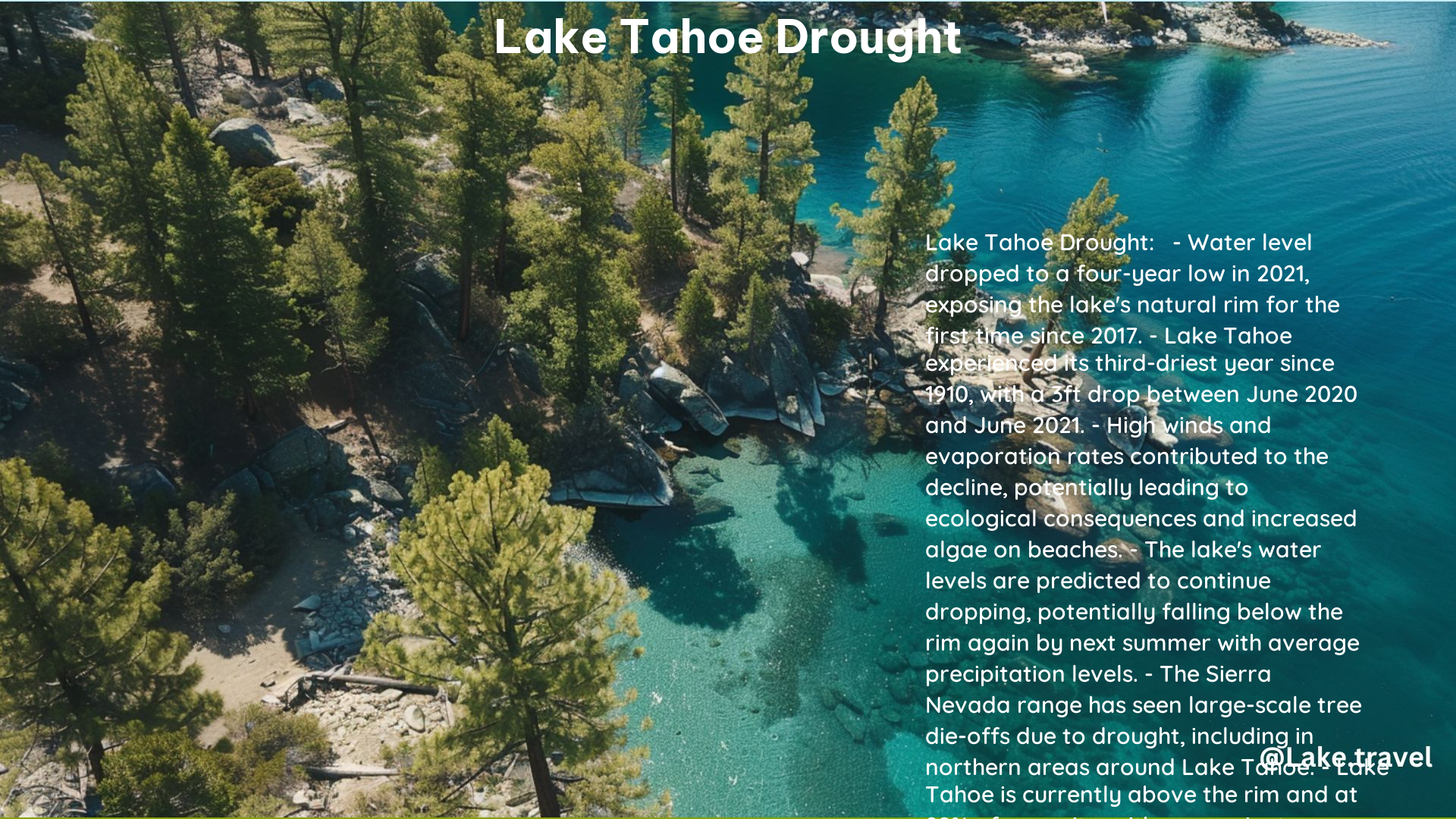Lake Tahoe, a renowned natural wonder nestled in the Sierra Nevada mountains, is currently facing a severe drought that has significantly impacted its water levels. This article delves into the current drought conditions, the impact on the lake’s water level, the ecological consequences, and the mitigation efforts underway to address this pressing issue.
Current Drought Conditions
The Lake Tahoe region has experienced its third-driest year since 1910, with the lake’s water level dropping approximately 3 feet between June 2020 and June 2021. This dramatic decline has exposed the lake’s natural rim, a phenomenon that hasn’t occurred since 2017.
The drought conditions are officially declared when the Truckee River flow rates at the California-Nevada state line fall below the required thresholds outlined in the Truckee River Operating Agreement. This has significant implications for the region’s water supply and ecosystem.
Impact on Water Level

When Lake Tahoe’s water level falls below its natural rim, the flow into the Truckee River ceases, cutting off a crucial water source for the surrounding area. This, in turn, affects the water levels in reservoirs throughout the region, including Lake Tahoe itself, which dipped below the rim in October 2022.
Ecological Consequences
The low water levels in Lake Tahoe can have far-reaching ecological consequences. One of the primary concerns is the potential increase in algae growth on the beaches, which can affect water quality and aquatic life. Additionally, warmer water temperatures can make the lake more hospitable to invasive species, altering the delicate ecosystem.
The drought has also taken a toll on the surrounding forests, with large-scale tree die-offs observed in the Sierra Nevada range, including areas around Lake Tahoe. This, coupled with the increased fire risk due to the drought conditions, poses a significant threat to the overall environmental health of the region.
Mitigation Efforts
In response to the drought, various organizations and authorities have implemented mitigation efforts to address the issue. The Truckee Meadows Water Authority (TMWA) has introduced conservation programs, such as Assigned-Day Watering and enhanced conservation measures during drought periods, to reduce water waste and increase efficiency.
TMWA also utilizes a conjunctive use strategy, which involves the coordinated management of surface and groundwater, to supplement Truckee River water during high-demand periods and recharge aquifers during cooler months.
At the local level, residents are encouraged to take actions such as reducing driving in the Tahoe Basin and using fewer fertilizers on lawns and gardens to build the lake’s resilience to climate change.
Conclusion
The Lake Tahoe drought is a pressing issue that requires immediate attention and concerted efforts from all stakeholders. By understanding the current conditions, the impact on water levels, and the ecological consequences, we can work together to implement effective mitigation strategies and ensure the long-term sustainability of this natural wonder. Through a combination of water conservation, groundwater management, and local actions, we can strive to preserve the beauty and ecological balance of Lake Tahoe for generations to come.
References
- Truckee Meadows Water Authority. (n.d.). Drought. Retrieved from https://tmwa.com/your-water/topics-facts/drought/
- Tahoe Daily Tribune. (2023, March 16). Is the western drought finally ending? That depends on where you look. Retrieved from https://www.tahoedailytribune.com/news/is-the-western-drought-finally-ending-that-depends-on-where-you-look/
- Drought.gov. (2022, November 17). California-Nevada Drought Status Update. Retrieved from https://www.drought.gov/drought-status-updates/california-nevada-drought-status-update-2022-11-17
- Drought.gov. (n.d.). 96154 Conditions. Retrieved from https://www.drought.gov/location/96154
- The Guardian. (2021, October 13). Lake Tahoe water level hits four-year low as drought pummels California. Retrieved from https://www.theguardian.com/us-news/2021/oct/13/lake-tahoe-water-level-drought-climate-change
